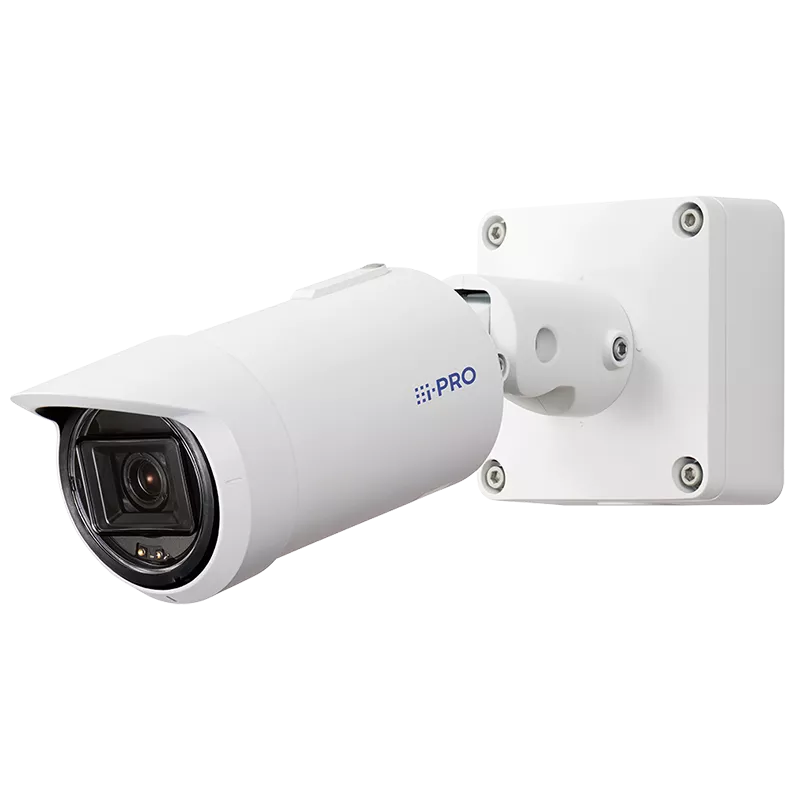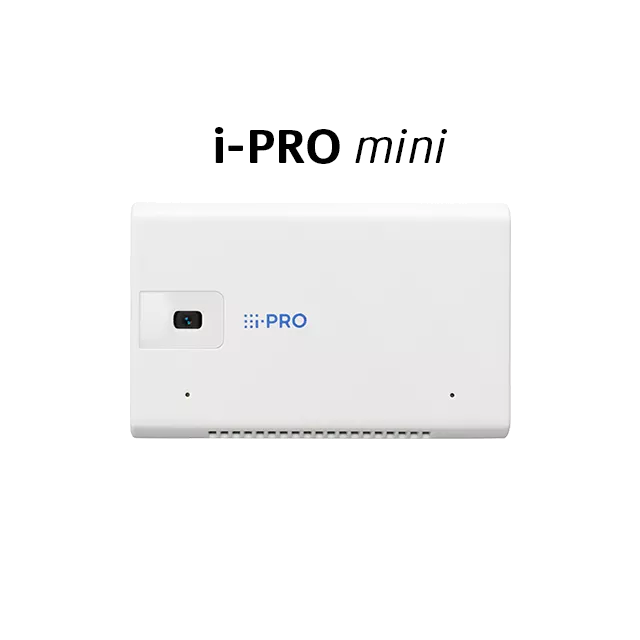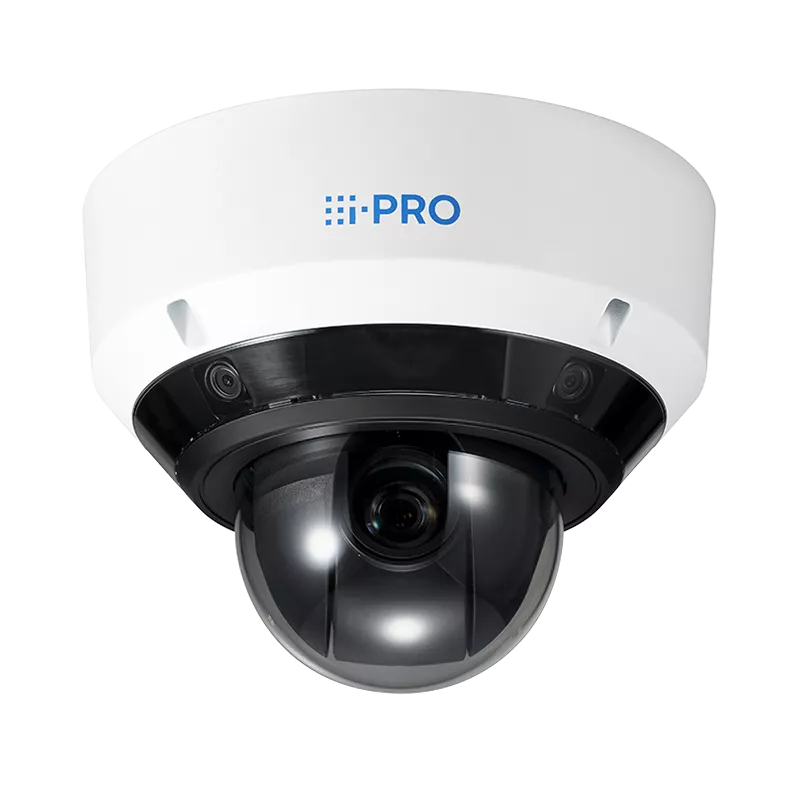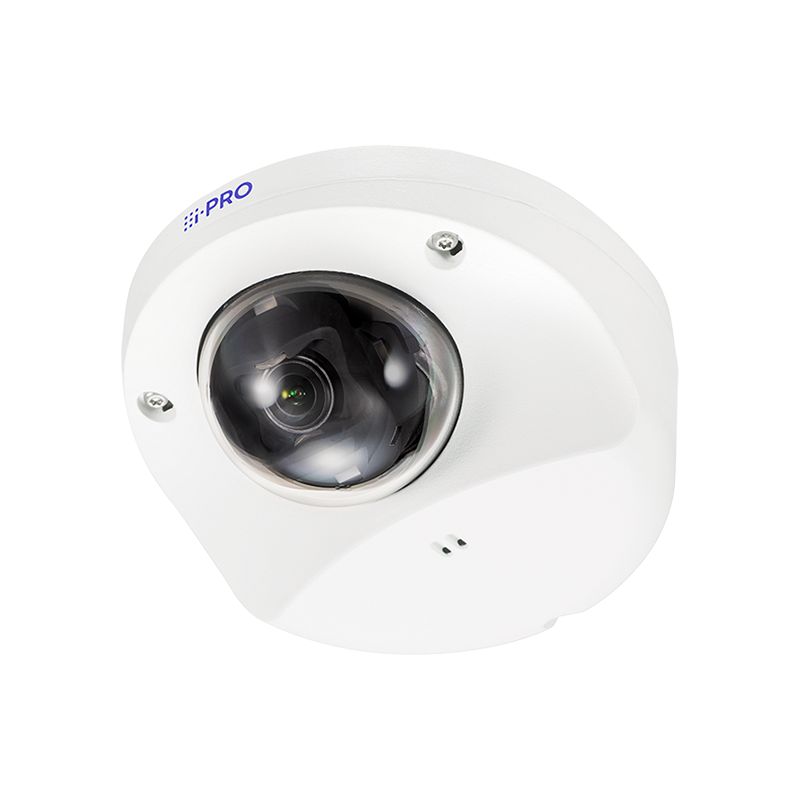
Network cameras are now a familiar presence in facilities and public spaces. Traditionally used for security and surveillance, recent advancements in artificial intelligence (AI) have expanded their capabilities to enhance public safety and deliver valuable operational and business insights. This article delves into the key features of network cameras, their diverse applications across industries, and critical considerations for their deployment.
Contents
1. What is a Network Camera?
A network camera, also known as an IP camera, connects directly to a local IP network or the internet without the need for additional equipment. Its key feature is a built-in CPU and other hardware that manages the processing of video and turns it into a high-quality digital stream for viewing, analyzing, and storing. Each camera has its own unique IP address that enables direct access to live or recorded footage from remote devices like smartphones or PCs. Whether for security or other uses, network cameras provide users with easy access to video streams via the internet.
2. Differences between Network Cameras and Web Cameras
Unlike typical web cameras, network cameras operate independently from PCs for connectivity and power, ensuring consistent performance even during PC malfunctions or software updates. This makes them highly reliable in uses where uninterrupted operation is critical, such as security and surveillance. Furthermore, their ability to integrate with a wide variety of devices, including smartphones and communication software, allows for flexible system configurations based on specific needs.
3. Advantages of Network Cameras over Analog Cameras
Network cameras offer several advantages over analog systems, especially in terms of image quality, system flexibility, and ease of installation. Key benefits include:
Higher Resolutions and Superior Low-Light Performance
While analog cameras are typically limited to standard definition (SD) resolutions, network cameras can capture high-definition (HD) and even ultra-high-definition (UHD) video, with resolutions as high as 4K or more. This allows for clearer, more detailed images. They also incorporate advanced image sensors and processing technologies, such as Wide Dynamic Range (WDR) and infrared (IR), making them capable of capturing high-quality footage in low-light conditions that analog cameras would struggle with.
Centralized Monitoring Across Multiple Locations
Network cameras allow centralized monitoring of footage from multiple locations via a variety of devices. Users can view live or recorded video from anywhere using smartphones, tablets, or PCs. The digital transmission ensures image quality remains high even over long distances, unlike analog cameras, where image quality often degrades with cable length.
Simplified Installation and Reduced Costs
Network cameras require only a single LAN cable for video, audio, and power, making them much easier and more cost-effective to install than analog systems, which often require multiple cables. Additionally, many network cameras can utilize existing network infrastructure, reducing the need for new wiring.
Advanced Image Analysis with AI-Enabled Cameras
One of the most important innovations in network cameras has been the advent of advanced in-camera image analysis. The rapid evolution of AI-based machine and deep learning algorithms have enabled network cameras to detect specific objects such as humans and vehicles. AI-enabled network cameras can also count and describe the unique attributes of these objects, such as color, type, and additional objects carried or worn. This makes them invaluable for finding persons or vehicles of interest very quickly when seconds count. The latest technology goes further by allowing AI-enabled cameras to learn custom and unique objects on-site that are important for a business to track or count. Because of these valuable traits, security cameras can collect valuable data that goes beyond security use cases, extending to life safety assistance while providing operational and business intelligence data.
4. Use Cases for Network Cameras
Network cameras have evolved to serve a wide range of applications beyond traditional security purposes. Below are five common examples of how they are used:
Monitoring at Various Facilities and Sites
Network cameras are often deployed in nursing homes, daycare centers, and logistics facilities where they can be remotely monitored. By accessing footage remotely through smartphones or PCs, users can increase monitoring efficiency, manage footage across multiple cameras, and address labor shortages in sectors like elder care. They can also monitor large or hazardous areas that are difficult to reach.
Operational Monitoring and Improvement at Manufacturing Sites
In manufacturing, network cameras help monitor production lines and improve operational workflows by providing video verification of daily operations. This can help identify inefficiencies and improve productivity while maintaining quality control, safety, and regulation compliance. Cameras can also be placed in challenging environments like cold storage or behind machinery to monitor hard-to-reach areas.
5. i-PRO Network Cameras
The ideal network camera depends on the specific installation environment and purpose. i-PRO offers a wide range of network cameras equipped with cutting-edge technology, making them suitable for a wide variety of applications and use cases. Below are the different types of i-PRO network cameras:

Dome Cameras
Dome cameras are characterized by their discreet, dome-shaped housing, which makes them less conspicuous and intimidating. They are ideal for monitoring in places like retail stores, offices, and apartment buildings. Their design also provides a strong deterrent, as it is difficult to determine the camera’s exact viewing direction. i-PRO’s dome cameras come in both indoor and outdoor models, with some featuring a built-in AI processor for advanced sensing capabilities.

Bullet / Box Cameras
These cameras have a highly visible, box-like shape that serves as a strong deterrent to criminal activity. They can be equipped with zoom and wide-angle functions for versatile surveillance. i-PRO’s outdoor box cameras are built with integrated housing, are rated IP66 for weather resistance, and have high impact resistance. Some models also come with built-in AI processors for advanced analytics.

PTZ (Pan-Tilt-Zoom) Cameras
PTZ cameras are remotely controllable, capable of rotating horizontally and vertically and zooming in on subjects. This makes them ideal for monitoring wide areas with fewer cameras. i-PRO’s PTZ models offer up to 40x optical zoom, allowing for detailed monitoring in real-time. Both indoor and outdoor models are available, with some featuring AI processors for enhanced detection and automated tracking of objects.
360-degree Fisheye Cameras (Omnidirectional Cameras)
360-degree Fisheye Cameras cover a 360° field of view, making them perfect for capturing wide areas with a single device. This reduces the number of cameras required for comprehensive coverage. Many i-PRO 360 Fisheye Camera models feature AI-powered analytics, which allows for people counting, motion detection, and more.

i-PRO mini
The i-PRO mini is a compact camera equipped with an AI processor, offering the same performance as larger models but in a smaller form factor. It is one of the smallest AI-enabled cameras on the market*, making it ideal for discreet surveillance. Wireless models are also available for installations where running cables is difficult.
*As of December 2021, based on i-PRO research.
Compact Dome Cameras
These smaller dome cameras are designed for installation in tight spaces where traditional cameras may not fit. They offer wide-angle views, with some models capable of a 132° horizontal field of view, making them ideal for maximizing coverage in small areas.

Multi-Sensor Cameras
Multi-sensor cameras house multiple camera units in a single body, each of which can be adjusted independently. This allows for flexible coverage of different angles with a single device. i-PRO offers models with 2, 3, or 4 sensors, depending on the required coverage. All models support outdoor installation, with some conforming to IP67 standards for dust and water resistance. AI-powered models are also available.
*Please consider the usage environment and conditions carefully when selecting a product.
Connect with an Expert
Find out how i-PRO products the most valuable assets in your environment

